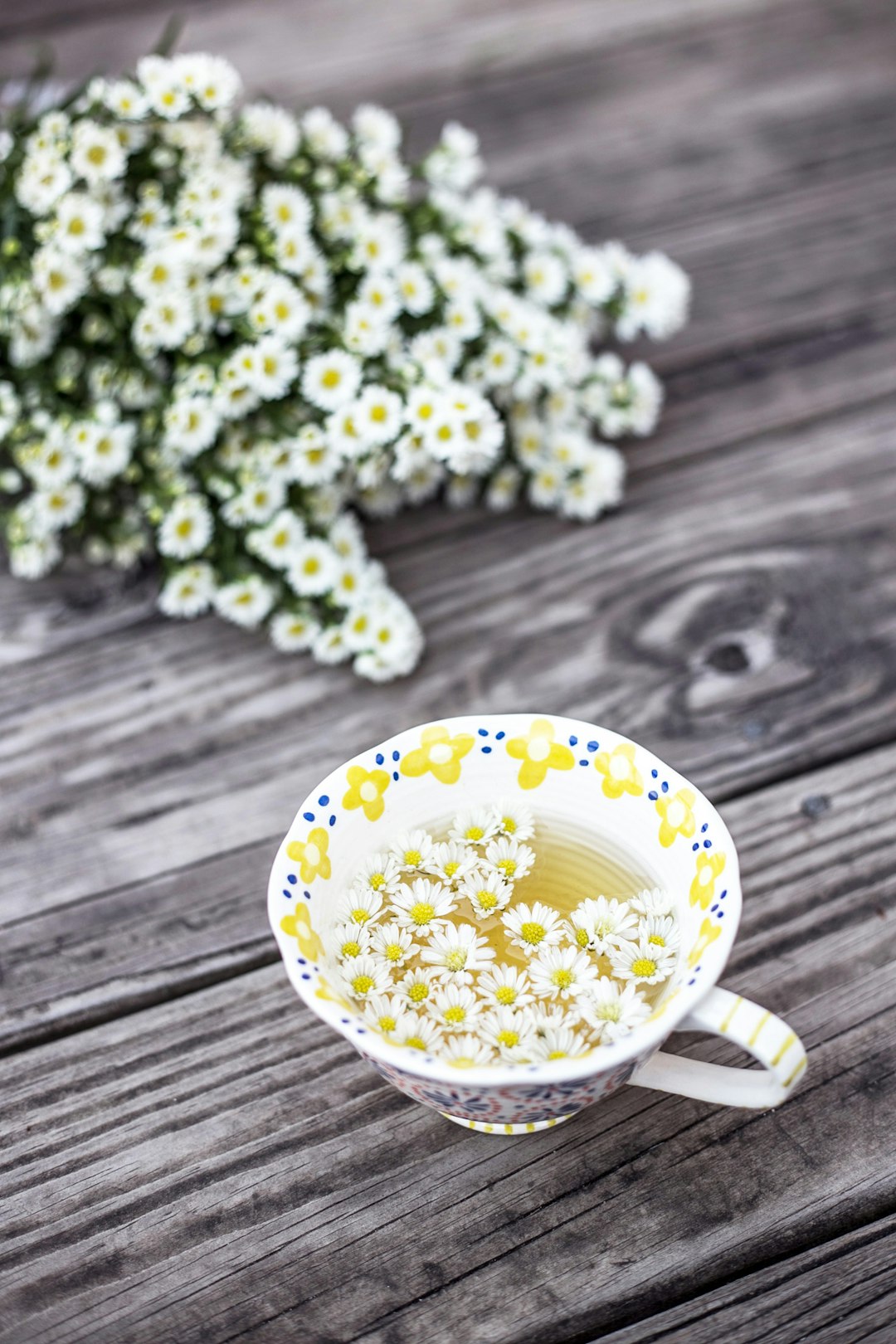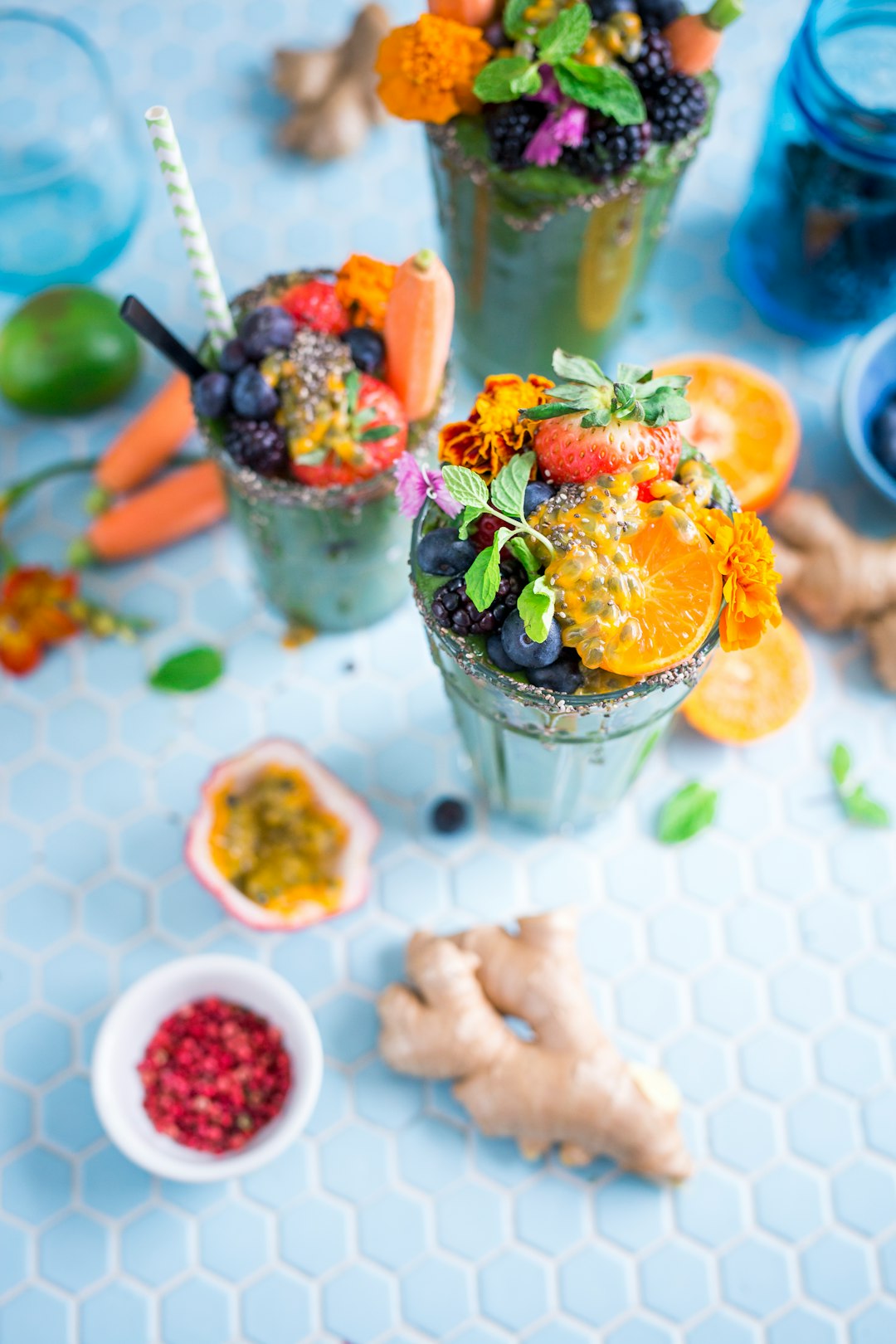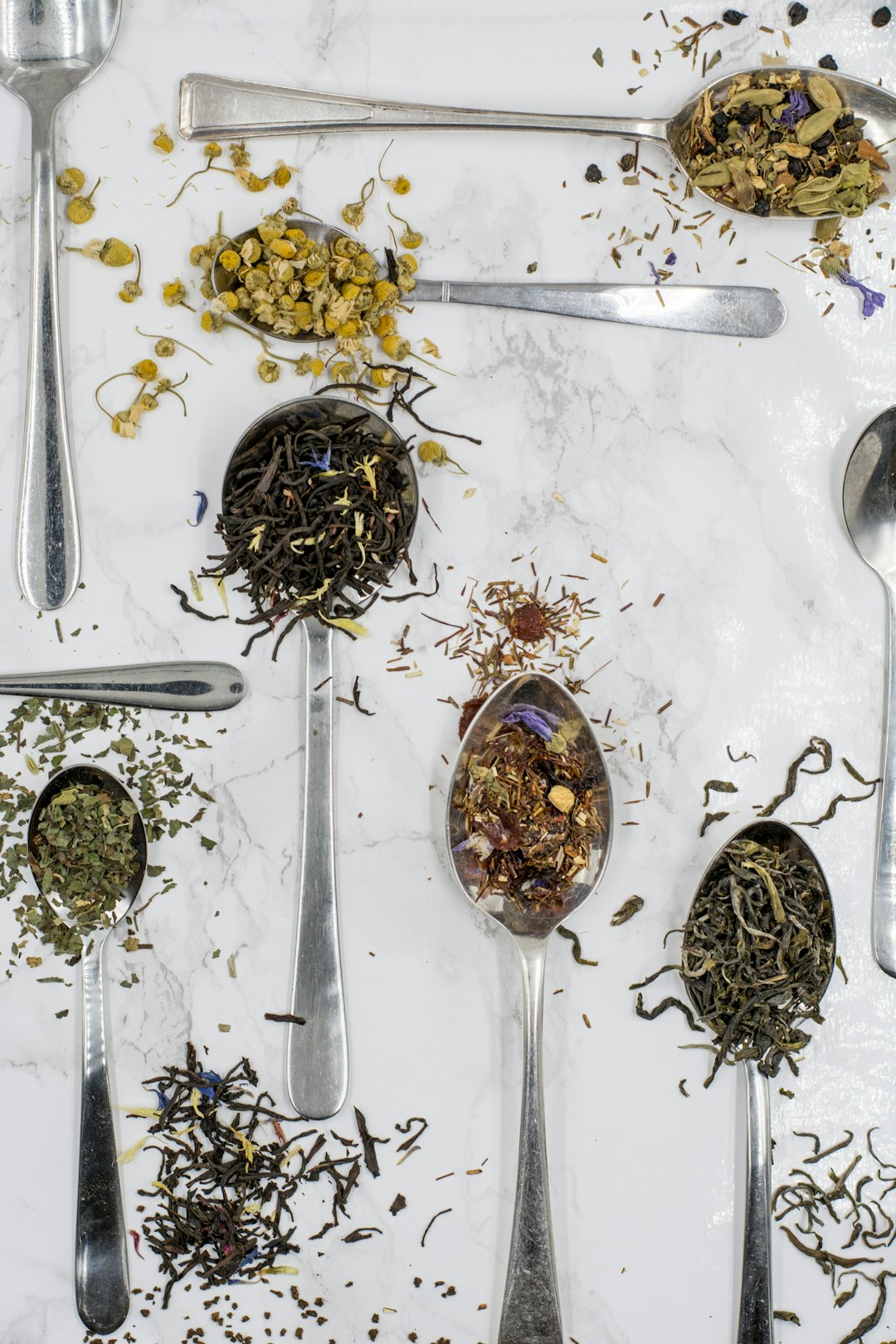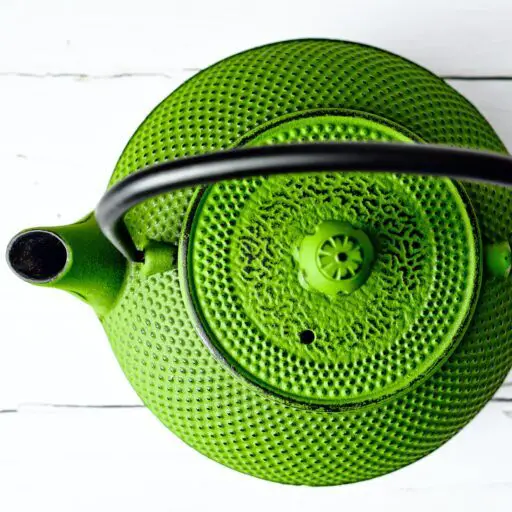Support our educational content for free when you purchase through links on our site. Learn more
How Do Tea Sommeliers Nail the Best Food & Dessert Pairings? 🍵 (2025)

Picture this: you’re at a cozy afternoon tea, savoring a delicate slice of lemon tart. You take a sip of your tea—and suddenly, the flavors explode in perfect harmony. Ever wonder how tea sommeliers create these magical matches? It’s not just luck or guesswork; it’s a blend of art, science, and a dash of sensory wizardry. In this article, we peel back the curtain on how tea experts determine the best tea pairings for food and dessert, revealing 10 essential rules and insider tips to elevate your own tea experience.
From understanding tea flavor profiles to mastering aroma and texture matching, we’ll guide you through everything you need to know to become your own tea sommelier. Plus, we’ll share expert reviews of top loose leaf teas like Twinings and Harney & Sons, and reveal the latest trends shaking up the tea pairing world in 2025. Ready to sip smarter and savor deeper? Let’s dive in!
Key Takeaways
- Tea pairing is both an art and science, relying on sensory evaluation and flavor profile mastery.
- Matching tea weight and intensity with food richness is crucial for harmonious pairings.
- 10 expert rules help sommeliers balance congruence, contrast, and regionality in pairings.
- Different tea types (green, black, oolong, etc.) suit specific cuisines and desserts based on their unique characteristics.
- Seasonal and cultural factors influence pairing choices, making tea pairing a dynamic, evolving craft.
- Experimentation is encouraged—your palate is the ultimate guide!
- Top loose leaf teas from Twinings and Harney & Sons offer versatile pairing options to start your journey.
👉 Shop Loose Leaf Teas & Specialty Blends:
- Twinings Loose Leaf Teas on Amazon | Twinings Official Site
- Harney & Sons Loose Leaf Teas on Amazon | Harney & Sons Official
Unlock the secrets of tea and food pairing and transform every sip into an unforgettable experience!
Table of Contents
- Quick Tips and Facts About Tea and Food Pairings 🍵🍰
- The Art and Science Behind Tea Sommelier Pairing Expertise 🎨🔬
- Understanding Tea Flavor Profiles: Unlocking the Taste Spectrum 🌈
- Top 10 Rules Tea Sommeliers Swear By for Perfect Tea & Food Matches ✅
- How Tea Types Influence Food Pairings: Green, Black, Oolong & More 🍃☕
- Pairing Tea with Desserts: Sweet Harmony or Flavor Clash? 🍫🍓
- Tea Pairing Techniques: Aroma, Body, and Texture Matching Explained 👃💪🍽️
- Seasonal Tea Pairings: How Sommeliers Adapt to Weather and Mood 🌞❄️
- Cultural Influences on Tea and Food Pairings: East Meets West 🌏🍜🍵
- Innovative and Trending Tea Pairings in 2024: What’s Hot? 🔥🍹
- DIY Tea Pairing Guide: How You Can Become Your Own Tea Sommelier 🏠👩🍳
- Expert Reviews: Twinings Loose Leaf Teas & Their Best Food Matches 🌿🍽️
- Afternoon Tea Pairings: Classic and Healthy Food Ideas to Elevate Your Experience 🍰🥗
- Common Mistakes to Avoid When Pairing Tea and Food 🚫☕🍴
- FAQs: Your Burning Questions About Tea and Food Pairings Answered ❓🍵
- Conclusion: Mastering the Art of Tea and Food Pairing Like a Pro 🎓🍽️
- Recommended Links for Further Tea Pairing Exploration 🔗
- Reference Links and Sources: Where We Got Our Tea Wisdom 📚
Quick Tips and Facts About Tea and Food Pairings 🍵🍰
Did you know that the world’s best tasting tea, according to some connoisseurs, pairs exquisitely with a surprising range of flavors? It’s true! Just like wine, tea can elevate your culinary experience from ordinary to extraordinary. But where to begin? 🤔
Fear not, fellow tea lovers! We, the tea sommeliers at Tea Brands™, are here to spill the tea (pun intended 😉) on creating harmonious tea and food pairings.
Here are some quick tips to get you started:
- Consider the weight: Lighter teas like white or green teas pair well with delicate dishes, while robust black teas can stand up to richer, heavier meals.
- Think about flavor intensity: Match bold flavors with bold teas. For example, a spicy curry might pair well with a malty Assam, while a light salad could be complemented by a floral jasmine green tea.
- Don’t be afraid to experiment: There are no hard and fast rules when it comes to tea pairing. Have fun and let your taste buds guide you!
Fascinating Tea and Food Pairing Facts:
- The practice of tea pairing has been around for centuries in Asia, where tea is often enjoyed with meals.
- Tea can cleanse the palate, making it an excellent choice for pairing with a variety of dishes.
- Some teas, like Pu-erh, are believed to aid digestion, making them a perfect after-dinner drink.
The Art and Science Behind Tea Sommelier Pairing Expertise 🎨🔬
Ever wondered how tea sommeliers, those mystical beings who can sniff out the perfect tea for any occasion, work their magic? ✨ It’s a fascinating blend of art and science, honed through years of experience and a deep understanding of flavor profiles.
Sensory Evaluation: The Nose Knows 👃
Just like wine sommeliers, tea sommeliers rely heavily on their senses, particularly smell and taste. They analyze the aroma, body, and finish of a tea to identify its unique characteristics.
Understanding Flavor Profiles: A Symphony of Tastes 🎼
Tea sommeliers possess an encyclopedic knowledge of tea flavor profiles. They can distinguish between the grassy notes of a Japanese Sencha, the floral aroma of a Chinese Jasmine tea, and the malty richness of an Indian Assam.
Food Pairing Principles: Finding the Perfect Match 🤝
Armed with their sensory skills and flavor expertise, tea sommeliers apply specific principles to create harmonious pairings:
- Congruence: Matching similar flavors, like pairing a citrusy Earl Grey with a lemon tart.
- Contrast: Balancing opposing flavors, such as serving a smoky Lapsang Souchong with a creamy cheesecake.
- Regionality: Considering the origins of both the tea and the food, like pairing a Japanese Sencha with sushi.
The Human Element: Personal Preferences Matter 💖
While science plays a crucial role, tea pairing is also an art form. Sommeliers consider personal preferences, cultural influences, and even the mood of the occasion to create truly memorable experiences.
Conclusion: Mastering the Art of Tea and Food Pairing Like a Pro 🎓🍽️

Well, dear tea adventurers, we’ve journeyed through the fragrant world of tea sommeliers and their secret sauce for pairing tea with food and dessert. From understanding the nuances of tea flavor profiles to mastering the balance of aroma, body, and texture, you now hold the keys to unlocking a whole new dimension of culinary delight.
Remember our quick tip about matching the weight and intensity of tea with your dish? That’s your golden rule to avoid flavor clashes and create harmony on your palate. Whether you’re sipping a delicate white tea alongside a panna cotta or savoring a robust Assam with a hearty roast, the magic lies in thoughtful pairing.
And yes, while tea pairing may seem like an art reserved for sommeliers, it’s really about curiosity, experimentation, and enjoyment. So go ahead, play with contrasts and congruences, explore regional matches, and most importantly, trust your taste buds.
If you’re inspired to dive deeper, don’t miss our expert reviews of Twinings Loose Leaf Teas and our DIY guide to becoming your own tea sommelier. Your afternoon tea rituals will never be the same again!
Now, go forth and sip, savor, and pair like the tea connoisseur you were born to be! 🍵✨
Recommended Links for Further Tea Pairing Exploration 🔗
Ready to elevate your tea game? Check out these top picks and resources from Tea Brands™ and beyond:
- Twinings Loose Leaf Teas:
- Tea Sommelier Books:
- The Tea Companion: A Connoisseur’s Guide by Jane Pettigrew — Amazon Link
- The Art and Craft of Tea by Joseph Uhl — Amazon Link
- Specialty Tea Blends:
- Tea Pairing Guides and Articles:
FAQs: Your Burning Questions About Tea and Food Pairings Answered ❓🍵

What are the key flavor profiles that tea sommeliers consider when pairing tea with sweet and savory dishes?
Tea sommeliers analyze a tea’s aroma, taste, body, and finish to identify its flavor profile. Key profiles include:
- Floral and fruity notes: Common in jasmine, oolong, and some green teas, these pair well with light desserts and fresh fruits.
- Malty and robust flavors: Found in Assam and Keemun black teas, these complement rich meats and hearty dishes.
- Smoky and earthy tones: Present in Lapsang Souchong and Pu-erh, ideal for smoked or grilled foods.
- Sweet and honeyed nuances: Typical of some white and yellow teas, perfect for delicate pastries and custards.
By matching these profiles to the dominant flavors in food—whether sweet, savory, spicy, or creamy—sommeliers create balanced and complementary pairings.
How do tea sommeliers balance the bitterness and astringency of tea with the richness and acidity of food and desserts?
Bitterness and astringency in tea can either enhance or clash with food depending on balance. Sommeliers use these strategies:
- Counterbalance richness: Astringent teas like green or black teas can cut through fatty or creamy dishes, cleansing the palate and refreshing the senses.
- Temper acidity: Mild teas with subtle sweetness (e.g., white or yellow teas) soften the sharpness of acidic foods like citrus desserts.
- Match intensity: Strong teas with pronounced bitterness pair well with equally bold flavors, such as dark chocolate or spicy curries, to avoid being overshadowed.
This delicate dance ensures neither tea nor food dominates, but instead, they elevate each other.
What role do the origin and production methods of tea play in determining the best pairings for specific types of cuisine and desserts?
The origin and processing of tea profoundly influence its flavor and thus its pairing potential:
- Regional terroir: Japanese Sencha’s vegetal notes suit Japanese cuisine, while Indian Darjeeling’s muscatel flavor complements lighter European dishes.
- Oxidation level: Green teas (unoxidized) are fresh and grassy, ideal for seafood and salads; black teas (fully oxidized) are bold, pairing well with red meats.
- Processing techniques: Roasted oolongs have nutty, caramelized flavors that match roasted meats and desserts, while fermented Pu-erh teas offer earthy depth perfect for aged cheeses and game.
Understanding these factors helps sommeliers tailor pairings that respect both tea and food origins, creating authentic and harmonious experiences.
Can tea sommeliers provide recommendations for pairing tea with specific ingredients or flavor components, such as chocolate, spices, or citrus?
Absolutely! Tea sommeliers excel at pinpointing pairings based on specific ingredients or flavor notes:
- Chocolate: Match the tea’s body to the chocolate’s intensity. For example, a malty Assam pairs beautifully with milk chocolate, while a smoky Lapsang Souchong complements dark chocolate’s bitterness.
- Spices: Spiced teas like chai enhance similarly spiced desserts or savory dishes, while citrusy Earl Grey brightens dishes with lemon or orange zest.
- Citrus: Floral or fruity teas with natural citrus notes (like some oolongs or jasmine teas) amplify fresh citrus flavors in food.
Sommeliers often recommend tasting teas and foods separately first, then together, to discover nuanced interactions and personal favorites.
How can I start experimenting with tea and food pairings at home?
Start simple! Pick a tea you love and pair it with a dish or dessert you enjoy. Use the “light to strong” rule: begin with delicate teas and mild foods, then progress to bolder flavors. Keep notes on what works and what doesn’t. Over time, your palate will sharpen, and you’ll develop your own pairing style.
Are there any common mistakes to avoid when pairing tea with food?
Yes! Some pitfalls include:
- Pairing a very strong tea with a delicate dish, which can overpower the food.
- Ignoring the tea’s temperature; hot tea can amplify bitterness.
- Overlooking personal taste preferences—pairings are subjective, so trust your palate.
Reference Links and Sources: Where We Got Our Tea Wisdom 📚
- Twinings Food Pairing Guide — Comprehensive tea and food pairing suggestions from a world-renowned brand.
- Binwise on Tea Pairing Options — Insights into tea pairings in Michelin-starred restaurants and evolving trends.
- Vinhood: Tea Time and Food Pairings — Deep dive into the art and science of tea and food pairings, including neurogastronomy perspectives.
- Twinings Official Website — Explore their loose leaf teas and pairing recommendations.
- Harney & Sons Official Website — Specialty teas and pairing ideas.
- Tea Brands™ Specialty Blends — Discover unique blends curated by our expert tasters.
Ready to take your tea and food pairing skills to the next level? Dive into our Tea Brand Spotlights and Tea Brand Guides for more expert insights and delicious inspiration!
